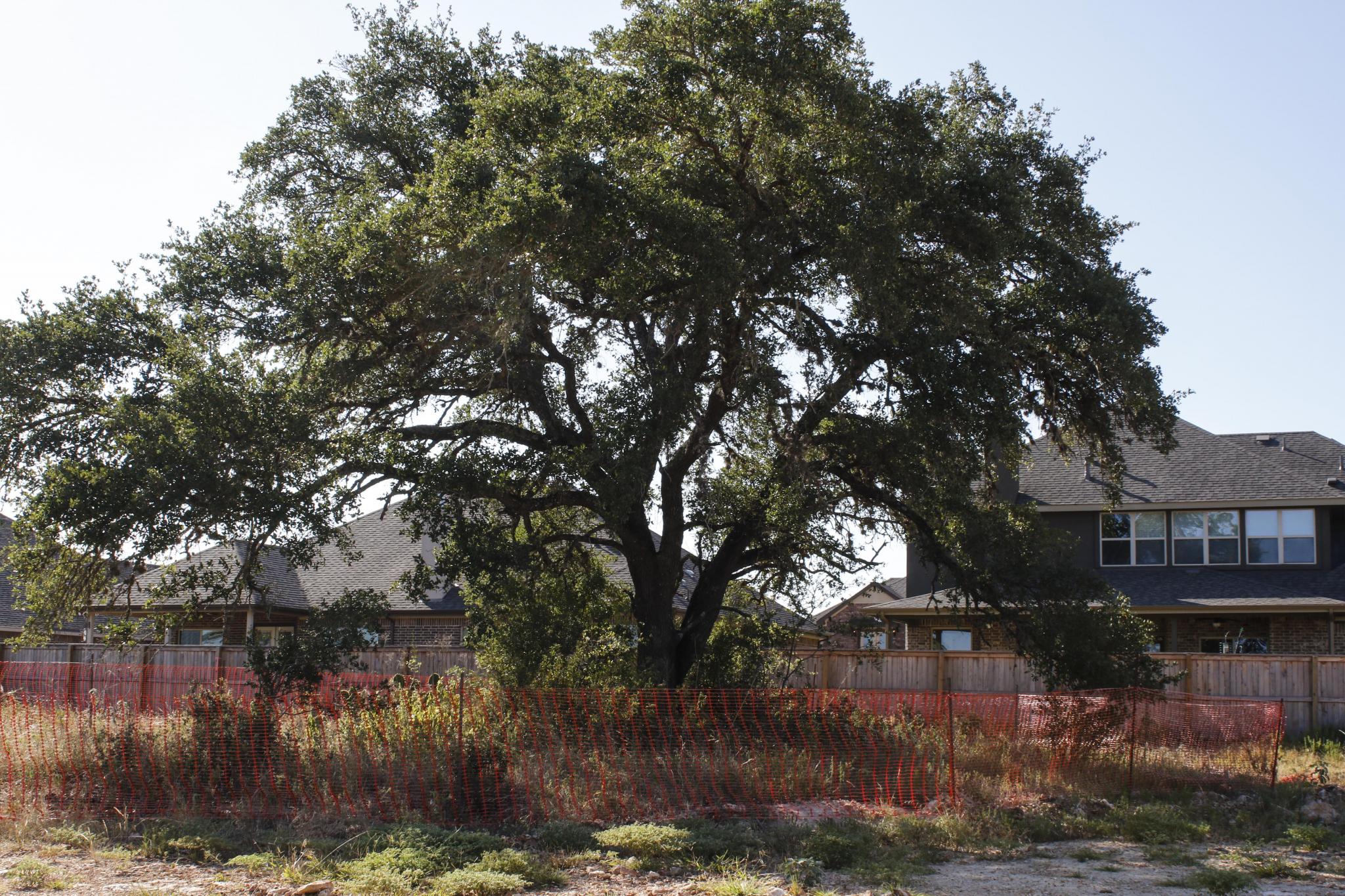
A protected tree in the Vista de los Santos development. (Daily Record file photo)
Efforts underway to restore city’s ‘target’ coverage
From the sentinel cypress along the San Marcos River to the pecans that shade the lawn of the Hays County Courthouse to the sprawling oaks along Belvin Street — San Marcos appears to be a shady place blessed with an abundance of trees.
But looks are deceiving. By the most commonly-used standard, San Marcos’ urban tree canopy is only half of what it should be. Using another study it fares better — but only by a little at around two-thirds of the target.
According to city of San Marcos Urban Forester Kelly Eby and the Texas Forest Service (TFS), the target canopy for cities is 30 percent. The Texas Forest Service says according to the last statewide survey in 2012, the canopy was at 15.7 percent. Eby said a 2017 survey the city conducted by using I-Tree put the canopy at 21.7.
The TFS defines urban canopy as “the layer of leaves, branches and stems of trees that cover the ground when viewed from above.” In addition to shade, trees provide economic benefits and add to the overall “livability” of communities, the TFS says.
Eby said prior to the 2012 survey, the last time one was conducted was in 2004. The next is scheduled for this December.
The 2012 survey was conducted after the punishing drought of 2011, but well before the floods of 2015 that downed hundreds of trees particularly along the Blanco River. Hurricane Harvey, just last year, took out more with days of sustained tropical storm-force winds.
“We’ve been doing a lot of research on canopy data and running analyses,” Eby said. “We’re trying to figure out where we’re at between the two different analyses … to try and get an accurate assessment,” something that will continue after the December survey, “so we can see where we are going as far as losses.”
The survey, she said, is done from the air using Lidar radar which is “able to bounce off the tree canopy and figure out where the vegetation is and how it changed.”
Eby acknowledged that 2011 was a tough year. “We had a lot of drought in Texas and lost significant trees,” she said. Then came 2015. “About 16 percent of the Blanco River watershed is included in the San Marcos city limits.”
Like many cities, San Marcos has measures in place to protect heritage trees, defined as having a diameter breast height (DBH) of 24 inches or more. Protected trees, meanwhile, are those having a DBH of 9 through 23 inches.
Code SMTX, recently adopted by the San Marcos City Council after years of development and refinement,” is “strengthening tree protection standards during development and making them more enforceable … increasing mitigation requirements for removed trees (and) … encouraging the preservation of established trees, particularly heritage trees, with new tree credits.”
While those standards were developed mainly because of new development, Eby said the city also has a relatively new program on maintaining trees on public property.
“We have over 2,000 acres of public property and we have been creating an inventory and assessing the tree health and prioritizing the needs that need to be accomplished,” she said, with a focus on “maintenance and safety” — ranging from removing or replacing trees, to pruning and mulching and doing further tree care.
Some local trees are in peril because of oak wilt, which can quickly spread from tree to tree throughout the urban canopy. “This past spring we mailed, 10,000 copies of an informational flyer about oak wilt in Hays County,” she said, adding that the county has about 1,200 known oak wilt sites including areas of Hunter Road and Lime Kiln Road and around Spring Lake. “It’s very important that we prevent the spread of oak wilt.”
In terms of new trees, Eby said thousands upon thousands have been planted along the Blanco since the 2015 floods, some in partnership with Treefolks. “We are actively trying to replace trees that were lost ..we planted 200 in green spaces like Prospect and Schulle Canyon and Stokes Park.”











